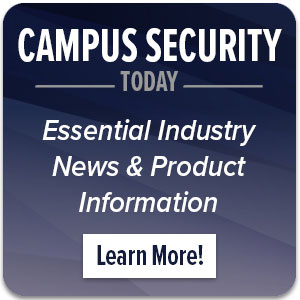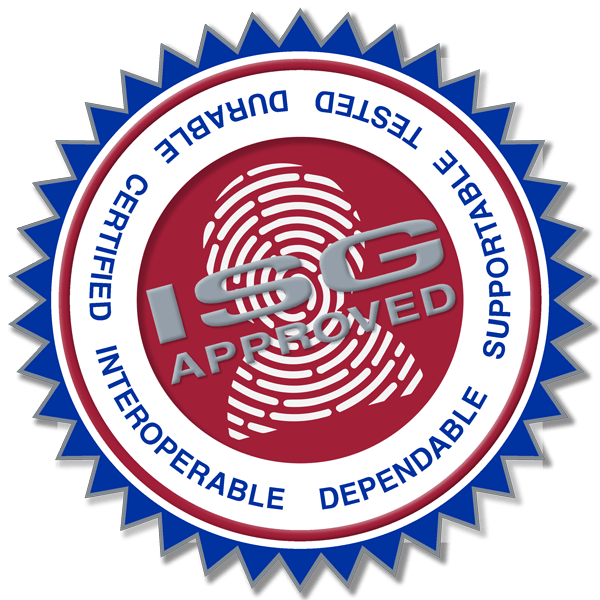The new academic year is now kicking into high gear at colleges and universities, and on many campuses, students were welcomed this fall with the added convenience and security of mobile access credentials. It is a trend that has become more of an expectation than a surprise in the world of higher education as the demand for advancements in electronic access control (EAC) like mobile credentials continues to grow.
Just like using their smartphone’s Apple Wallet and Google Pay transactions for everything from food and laundry services to bookstore and other purchases, students today want a similar seamless user experience when it comes to accessing residence halls, rec centers, dining areas, delivery lockers, libraries, athletic events, academic spaces and more.
In general, EAC solutions like mobile provide greater efficiencies for the campus, making it much simpler to issue credentials, which can be done remotely and in advance, even before the student comes to campus. And because students seem to always have their mobile devices on them and practically never lose them, the need to reissue credentials is rare. Students love the technology because of its non-contact and customized access capabilities and the convenience of having pretty much everything they need all in one device.
Think of how it has made package deliveries so much easier and more secure, especially considering how many things are purchased online today. Locker solutions like those from Luxer One and Transact only take a tap on an assigned cabinet to open, allowing users to quickly and safely retrieve packages, laptop exchanges, food orders, medications and more. Today’s lockers located in residence halls, centralized mailrooms, libraries and other spots on campus can also be customized in different sizes and with refrigeration.
Mobile Access in the Larger Picture
For all its superior benefits, implementing mobile credentials does not mean that cards and wearables (that mimic cards) are going away. They will remain a part of the EAC mix and still serve a valuable purpose, especially for contractors and the many summer camp attendees who need to access campus housing and facilities on a temporary basis. The key is ensuring that access control technologies are compatible with both physical and mobile credentials.
In some cases, integrating mobile credentials into existing EAC systems may require the installation of new readers and other components depending on the compatibility of previous hardware. In other cases, universities may take the opportunity to re-evaluate and go down an entirely new path, potentially overhauling their enterprise-level solution(s) completely.
Advanced Security Impacts Student Enrollment
Security and safety are primary considerations for students and their parents when it comes to selecting their college or university of choice. As a result, it is essential for schools to get the word out about the priority an institution puts on keeping students, faculty, and staff safe, including the implementation of forward-thinking technologies like mobile credentials.
Marketing materials, staff bulletins, department meetings, and orientation sessions will go a long way in educating everyone about the value of a campus-wide deployment, like mobile credentials.
The Added Value of EAC Data
Whether a school is using mobile or card credentials, it is important to note that access control systems produce a massive amount of data that not only generates an audit trail for greater accountability and security but also provides critical analytics and information that can help ascertain life safety and wellness checks – information that might indicate a student may be at risk.
For instance, data could show that someone has not accessed their residence hall suite for an extended period or identify when a vehicle may have been abandoned in a parking garage or some other pattern out of the norm.
On a more positive note, access data may identify patterns that are helpful for customizing a student’s class schedule or guiding them to activities and events they’re most interested in. Being good stewards of this data, of course, is vital to balancing benefits with user privacy.
Things to Consider When Going Mobile
As desirable as the move to mobile credentials is and as eager as higher education institutions may be to deploy this advanced technology, the migration is often a multi-phase undertaking that needs to transpire over a few years, depending on construction schedules and their impact on campus activities, as well as available funding. There is a lot to consider and some challenges to be aware of.
If a school is currently issuing card credentials, a starting point is to document where cards are being used and note where the technology is being leveraged, such as residential room assignments under a housing management system.
It is also necessary to assess whether existing door readers will be able to read Near Field Communication (NFC) or Bluetooth Low Energy (BLE) credentials from a mobile phone. If modern readers are already in place for contactless ID cards, for example, then the institution may be partway there. In other cases, though, it is often necessary to upgrade or replace readers to accommodate mobile credentials.
There are also decisions that need to be made about where wireless/Wi-Fi locks are most appropriate versus wired installations. The determining factor is what’s on the other side of the opening; what is being protected. If it is a retrofit for a residence hall suite, a solution like IN120 Wi-Fi locks may be the most practical and economical fit. They will not bog down a network, are always fail-secure, and are not affected by power outages.
If it is new construction or a space where more real-time, online command control is required, IN220 PoE locks or IN100 real-time wireless locks are often the best options. This is particularly important in academic spaces where higher education institutions need to immediately lockdown classrooms, lecture halls and entrances in the event of an emergency.
Mobile Access Solutions from the ISG
Whether an EAC solution is wired or wireless, uses card credentials or mobile access, it is an investment that can pay dividends in student and staff life safety, convenience, recruitment, student retention and many other benefits.
Contact us to speak with your local ISG member dealer to talk about your specific campus security and mobile access credential needs. You can also ask us for more details on the huge portfolio of solutions we offer through our nationwide dealer network like access control, visitor management, photo identification, and tracking.
Original article written by Tyler Webb for Campus Security Today.


